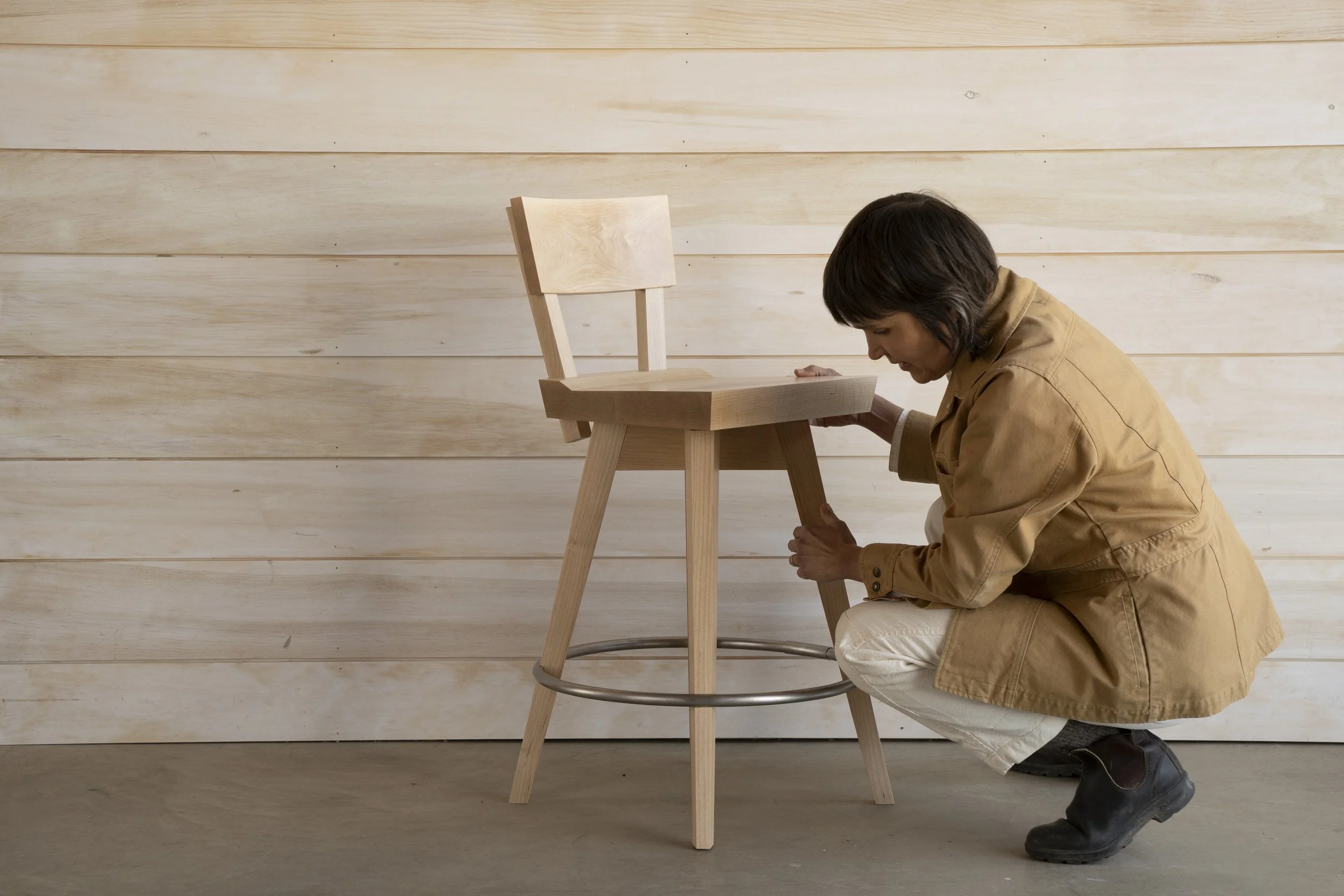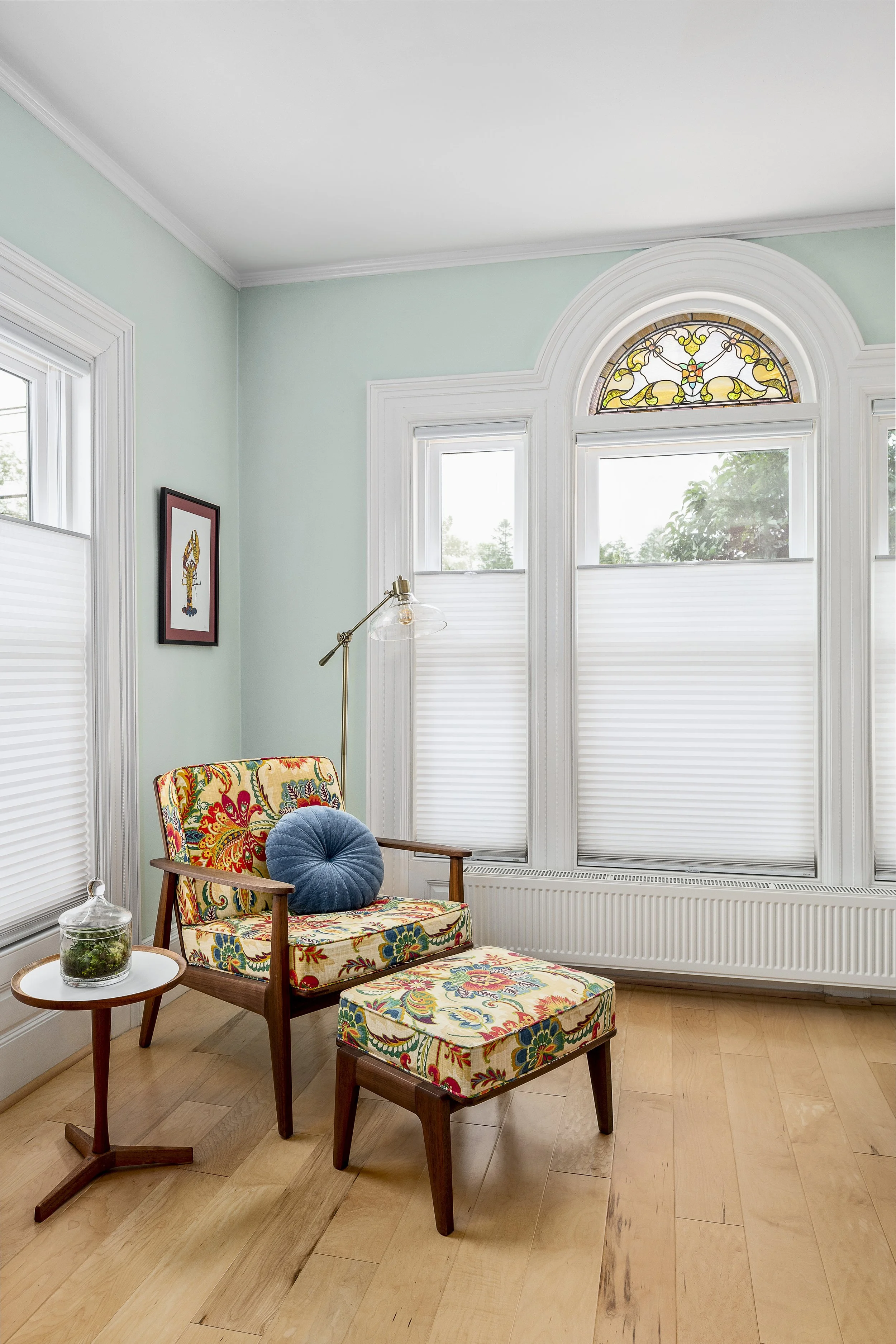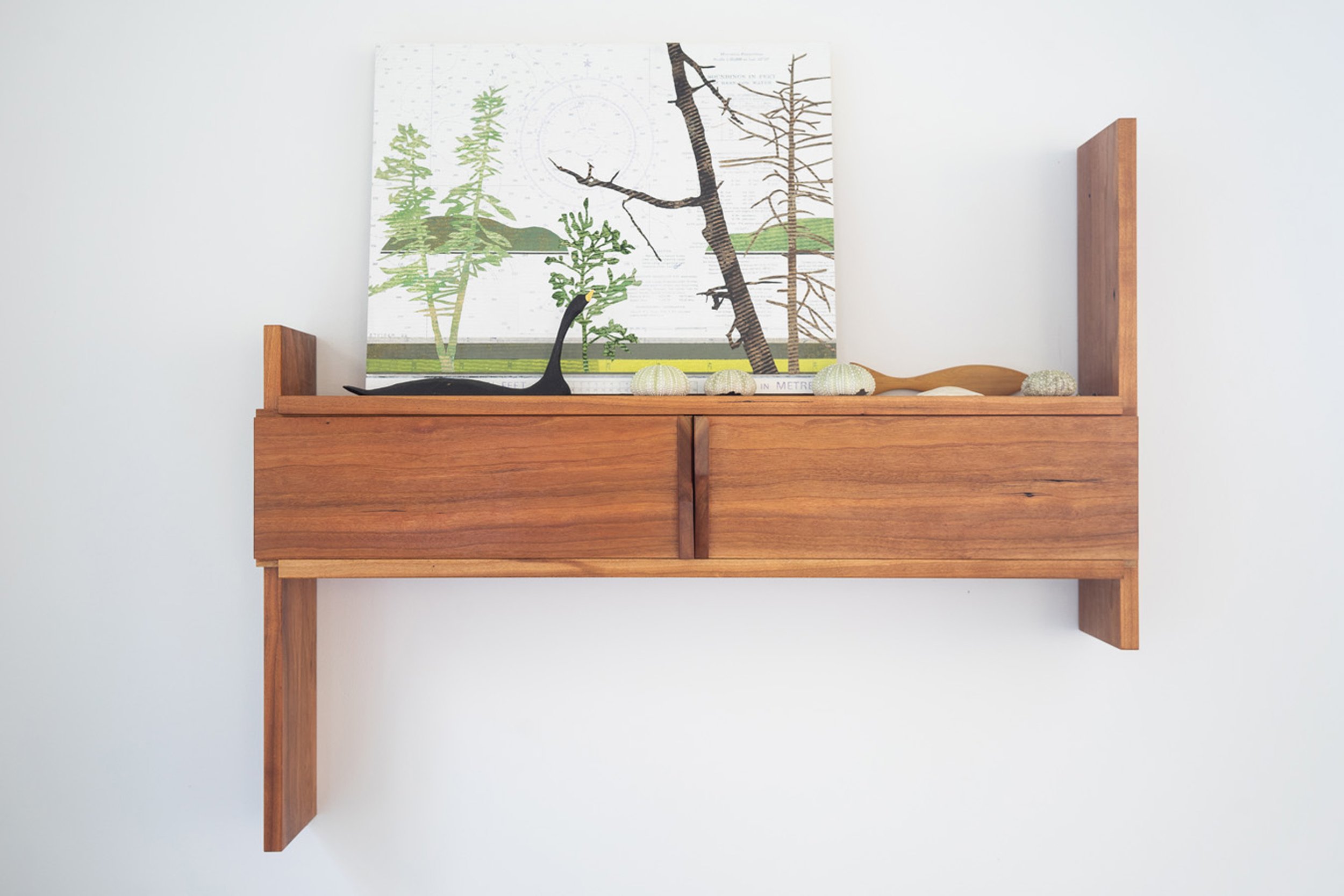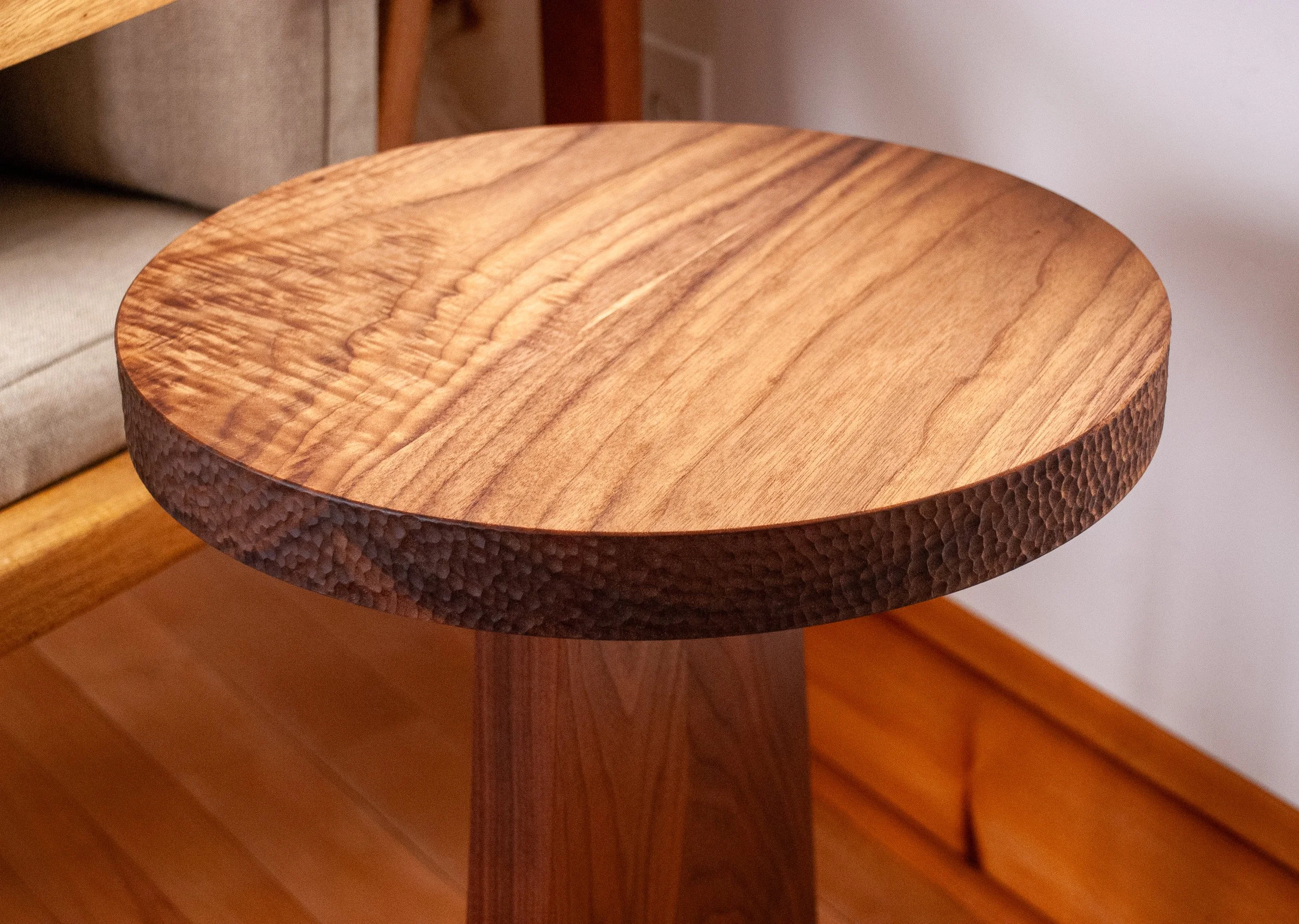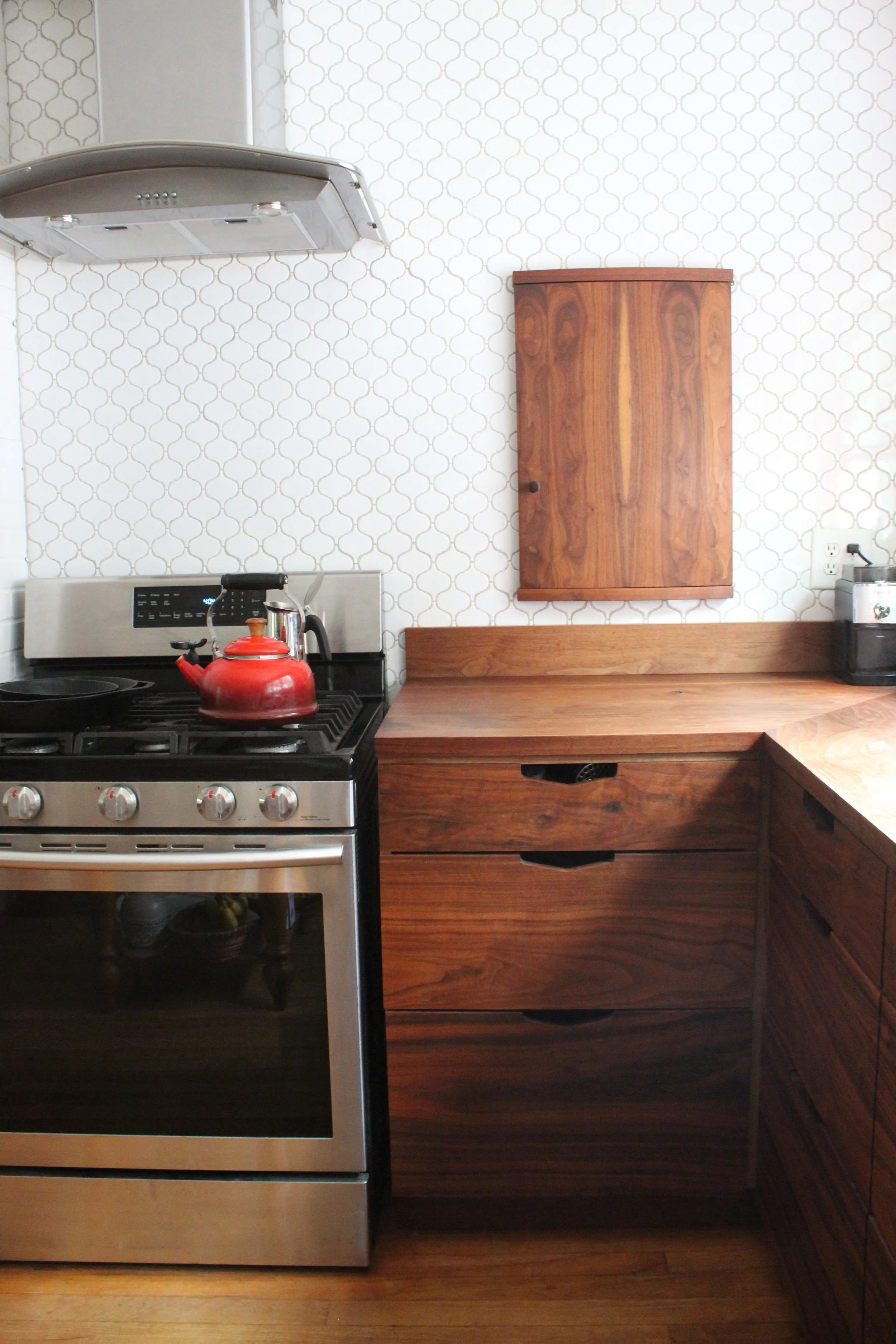Custom Craft Furniture
Heide Martin with a swivel stool. PHOTO: HESSLER CREATIVE
By Amy Paradysz
Five Maine women making heirloom quality pieces
As I get ready for a cross-country move to a much smaller space, only two types of furniture are making the cut: family antiques, like a music cabinet that once belonged to my great-great-aunt, and solidly constructed custom-made bookshelves and nightstands that a fine woodworker made for our family when I was a child. Not a stick of furniture that I’ve purchased in my lifetime is worth the cost of transporting it. That got me researching, and here’s what I learned: While the price of mass-produced furniture can be enticing, such pieces typically need to be replaced in 7 to 15 years, or sooner if you move frequently. The result is that Americans send more than nine million tons of furniture to landfills each year. To put that in context, the amount of furniture going to landfills today is now six times higher than it was in 1960. Collectively, there are many ways we can reverse that trend: thrifting, antiquing, refinishing, reupholstering, repurposing, gifting and donating to nonprofit organizations like Furniture Friends, Goodwill Northern New England or Habitat for Humanity ReStores. But to address the root of the problem, the solution is this: Fewer, higher quality pieces of furniture. Pieces that will outlast a single purpose or person or location. Pieces that will outlast us. I saw that level of craftsmanship last fall when we featured furniture maker C.H. Becksvoort, a national leader in the craft furniture movement both for the quality of his Shaker-inspired work and his longtime role as a contributor to Fine Woodworking magazine. This time, we feature five Maine women who make a living making beautiful, sustainable furniture built to last. Only after interviewing all five did we realize that each has a connection to the Center for Furniture Craftsmanship (CFC) in Rockport and that the school is part of the reason they have made Maine their home. Thanks to Maine’s robust crafts culture and the influence of CFC (and Haystack Mountain School of Crafts on Deer Isle), Maine is experiencing the slow but steady growth of a craft furniture culture.
Heide Martin’s Cali table before weaving. PHOTO: HEIDE MARTIN
Heide Martin, a longtime fiber artist, has become a masterful weaver. COURTESY PHOTO
HEIDE MARTIN DESIGN STUDIO
Heide Martin brought a background in urban design, landscape architecture and fiber arts to her program at CFC. After completing the 9-month Intensive and developing her core original designs, she stayed in Rockland, where in 2017 she founded Heide Martin Design Studio. She is the designer, lead weaver and creative director, and her husband Patrick Coughlin leads a small production staff as operations manager. Martin describes the studio’s pieces as minimalist, sometimes inspired by Shaker design and often with handwoven surfaces in seats and doors inspired by heritage craft techniques. In addition to building their line of stools, benches, chairs, cabinets and tables, the studio does custom designs and large-scale weave commissions. Whether they are building a “Simple Stool” (see previous page) or fulfilling an order for 20 handwoven doors, almost everything they make is a bespoke commission or a design that originated that way. “Somebody says they like my aesthetic but want something specific that we’re not already making,” Martin says. “Maybe they have dimensions in mind. Or they want the piece to have a drawer. I create a design package with two or three early-stage versions of what they might be looking for.” She develops that selection in more detail and works with Coughlin to create a mockup, a scale model and a digital 3-D model. “Rather than getting paid for all of our design and development time, we look at those opportunities as a chance to design something new for the collection,” Martin says. “We give the client an estimate, which is what they pay. But, during the build, we track our time carefully so that we price the piece accurately for it to become part of the collection for other clients to order.” An Ohio native, Martin is bemused that when she meets people at furniture and crafts shows across the country, they often say they can “see Maine” in her work. Maine is one of the nation’s hubs of boutique furniture, she says, adding that some of the mystique is the perception of Vacationland being the way life should be, which lends added cachet to Maine crafts. heidemartin.com
Libby Schrum gave a felled cherry tree new life in this 18-foot-long conference table, dubbed Ampersand. Over 6,400 squares of shop-sawn veneer from the tree make up the top surface; another 900 create a similar pattern on the underneath side. COURTESY PHOTO
Detail of a Libby Schrum piece called Modern Shake. COURTESY PHOTO
A Sving armchair and ottoman by Libby Schrum at Camden’s historic Bean House. PHOTO BY SARAH SZWAJKOS
LIBBY SCHRUm
It’s no exaggeration to say that Libby Schrum turns furniture-making into an art form: She is the Maine Arts Commission’s 2025 Fellowship Winner in Fine Arts. “I make mostly solid hardwood furniture in a way that, I hope, lasts several generations—objects that get passed down to the children and the children’s children, furniture that develops its own story through use,” she says. “I want each piece to be as perfect as I can make it. The design and thoughtful execution are parts of the challenge I love.” A recent commission had plenty to challenge this master furniture maker. Her clients requested an egg-shaped Art Deco armoire to serve as a closet, a liquor cabinet with wine storage and a hideaway for a landline phone.“I’m at the fitting-the-drawers stage and it is reminding me of boat work, maneuvering in small, tight spaces with very few straight lines,” Schrum says. “But ‘Eggoire’ is beautiful, will serve its function and is entirely unique.” Schrum first came to Maine from Texas 20 years ago for a 12-week Intensive at CFC. After studying furniture design as a graduate student at Rhode Island School of Design, she worked at Lyman Morse Boatbuilding for a handful of years, then opened a studio in Camden. In addition to being a lead instructor at CFC and teaching adult ed classes at Camden Hills Regional High School, she offers “STUDIOcations” for those who want to try their hands at making things with wood. “I have a notion based on conversations with people at trade and craft shows that I’m not the only one who thinks about or dreams in furniture,” Schrum says. “Most folks may not have the tools, time, knowledge or space to make them a reality. Some people come because they want to learn a skill. Others want to build something in particular.” Teaching furniture-making, she says, has become almost as rewarding as building furniture. libbyschrum.com
Christina Vincent’s Archipelago series is inspired by neighboring islands. PHOTO: BILL TRAVASKIS
Sandpiper by Christina Vincent. PHOTO: BILL TRAVASKIS
CHRISTINA VINCENT
What do you do with an art background and experience as a finish carpenter? Fall in love with furniture-making. That is Christina Vincent’s story. She came to the island community of North Haven for a summer and is still there 20 years later, self-employed as a craft furniture maker and a landscape designer. “When you find a place where you can connect and that feeds your creativity, you want stay there,” she says. “It’s a taproot, if you will. A grounding.” That first summer on North Haven, Vincent found work as a carpenter. After helping build several houses, she built one for herself. And then she started making furniture. “The first pieces I built were more from a carpenter mindset,” she says. “Then one day I stopped in at the Center for Furniture Craftsmanship in Rockport and started taking courses.” Vincent is attracted to the creativity involved in making one-of-kind functional art. She might make a design a couple of times but always with variations—changing up the dimensions, pattern placement, color or type of wood. Plus, every piece of wood is different. Knowing, for example, who milled the wood and where it came from is part of the piece’s origin story. “That’s important to me,” she says. “We typically don’t have a connection with a lot of the things in our everyday life. But when a client commissions a piece, it is not a disposable object. It is something treasured.” Vincent has developed a nature-focused style that is reflected in the names she gives her pieces, like Fernwood, a solid cherry and maple hardwood bench with intricate scrollwork that casts a beautiful shadow pattern on the ground as the sun moves across the sky. And Sandpiper, an adorable asymmetrical wall cabinet shaped like the wingspan of a petite shorebird. And Archipelago: a colorful collection of woven wall pieces and benches, separate and unique and yet still part of an archipelago. christinamvincent.com
Caitriona Fiero’s modern take on a desk with intersecting wishbone-like legs. PHOTO: MARK JULIANA
CAITRIONA FIERO
Catriona Fiero went to school for fashion design and was working in that field in the Big Apple when, in a moment of dissatisfaction with that career choice, she scrolled through Craigslist job descriptions. “I couldn’t believe there were woodshops in New York City still making furniture by hand,” she says, adding that she found a shop that would take her on as an apprentice. “I’ve always been handy, but when I discovered woodworking, I found my people. I love the skill sharing aspect. I wish everyone could learn to use these tools; it’s such an esteem boost. And working with wood, I get to reveal the natural beauty.” Having found this passion, she completed CFC’s nine-month Intensive program in 2018 and opened a garage wood shop in Biddeford in 2021. Since then, Fiero’s commissions have included desks, coffee tables, bureaus, cabinets, chairs, custom frames and a whimsical “rockingbird”—a twist on a rocking horse for a family with a pet parrot. She also upcycles and refinishes furniture and builds custom cabinets, mudroom benches and storage spaces. All in all, Fiero has found that life in Maine suits her and her family well. “There’s such beautiful local wood,” she says, noting that she buys from local lumber yards. “There’s a craft and DIY culture, too, and Mainers are willing to invest in something handcrafted.” fierowoodworking.com
A Studio89 living room/showcase. COURTESY PHOTO
A hand-carved walnut side table by Studio89. COURTESY PHOTO
A curved cherry spice cabinet with sugar maple interior by Studio89. PHOTO: AMY PARADYSZ
STUDIO89
Melissa Fuller and Nondas Iacovou, who met at the University of Vermont in 1989, have completely reinvented their lives to pursue their furniture making dreams as “Studio89.” Woodworking is their shared obsession. So much so that a dozen years ago, they left their careers in Alaska (hers as an audiologist and his as a physical therapist) to go to British Columbia. There, Iacovou enrolled in the Inside Passage School of Fine Cabinetmaking and shared what he was learning with his wife. “Then [in 2017] we bought this place sight unseen,”says Fuller, standing in her Scarborough home, “drove across country, moved here, and set up the garage as a workshop.” Why Maine? In addition to being driving distance from CFC, where they have both taken classes, they appreciate the “strong makers’ culture” and local sawyers who offer live-edge wood. For Studio89, the commission process is place-specific and hands-on. If someone asks them to design a dining room table, they might go to the home with cardboard and mock it up in place to figure out the dimensions, the shape of the top and the style. Fuller and Iacovou enjoy these house visits, which double as opportunities to explore the state they now call home. Their aesthetic highlights the natural beauty of the wood as much as possible, using local species and oil and wax finishes. “The aim is to bring nature inside, creating a sense of calm,” she says. “We believe in living better with fewer, more carefully chosen objects, choosing pieces that make you happy,” Fuller says. “We try not to over design. We all have too much going on in our lives, so we want to go home and feel peaceful and calm. Nature does that.” studio-89-design.com
This article appeared in the Fall 2025 edition of Green & Healthy Maine HOMES. Subscribe today!
Find Maine experts that specialize in healthy, efficient homes in the Green Homes Business Directory.

